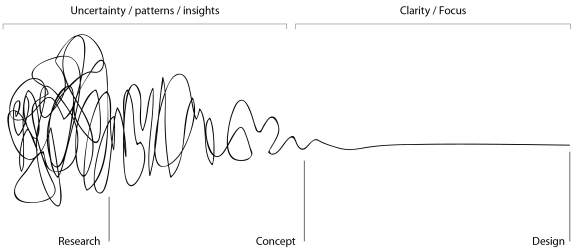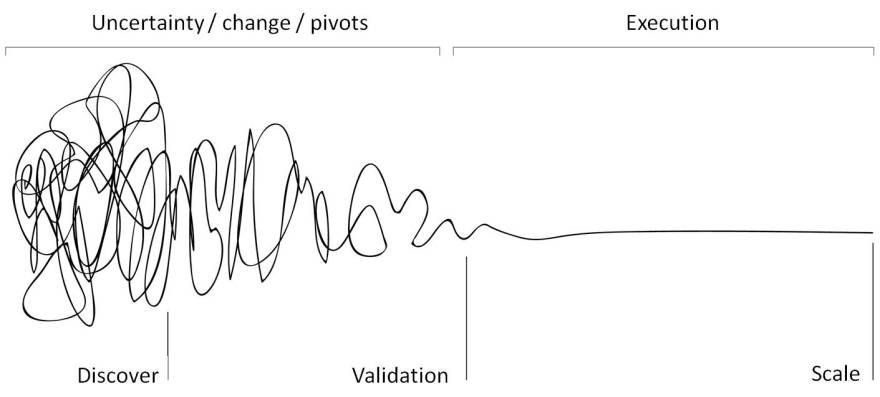Damien Newman used the design squiggle to illustrate the Design Thinking approach to solving problems.
It’s a really neat way of communicating the basic premise behind design thinking, and I like it a lot. Applied to business model innovation it shows the initial chaos and movement that surrounds any new business model as the founders get to grips with their concept. But what happens if we apply the squiggle to customer development?
Here’s what’s going on:
- Discovery: we think we have a business model, but we are not sure…so we identify some falsifiable hypotheses and get out of the building to test our theories. We’re not sure who our customers are, whether or not our product solves an actual problem, or whether our customers will want to pay good money for it even if it does. So we need to find out. Discovery is a great time to throw it all up in the air and find out what works. It;s not such a great time to lock yourself in a room and do research.
- Validation: as our customer discovery phase settles down a bit, we should be able to start validating some key assumptions that sit underneath our business model. Things like who the customer is, what problem is being solved, which market channels work best, and so on. As we get more certainty about the value proposition we would also start looking at what scales, so we would also want to find out which production methods work, how to manage costs and the best suppliers to get things moving.
- Scale: AFTER we have validated our business model, and confirmed that yes we do have a market for this, THEN we can start on the more familiar territory of product development and MBA style business venture launch.
If this is new to you, check out my previous posts on customer development, or read it from the man himself Steve Blank


Reblogged this on ROI HUNTERS Field Journal and commented:
Excellent Post at “Five Whys”, one of my frequent sites I read, and I wanted to share this with you as well.
too kind, thanks